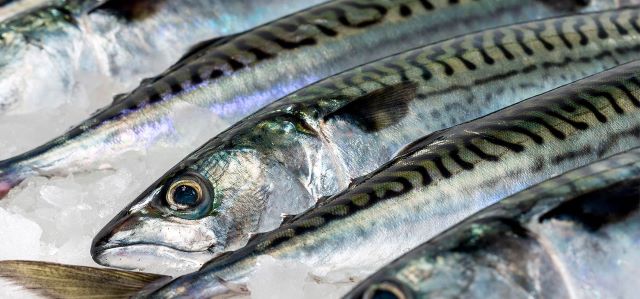
The appearance of Atlantic mackerel (Taiseiyosaba)
Common name: Atlantic mackerel, BostonBoston mackerel, Norwegian mackerel, Scottish mackerel, mackerel, Joey
Japanese name: Taiseiyosaba (大西洋鯖)
German common name: Atlantische Makrele, Gemeine Makrele, Gemeine Makrele
Italian common name: Agerto, Bisaru, Biseru, Cavaglia, Colatura, Culeu, Ganzariol, Lacerta, Lacerto, Lacierte, Lacierti, Lacierto, Lacierto, Laxertu, Lenzard, Macarello, Maccarello, Maccariedde, Maccerello
Spanish common name: Caballa, Caballa del Atlántico
Portuguese common name: Cavala, Cavalla, Garo
Scientific name: Scomber scombrus Linnaeus, 1758
Nigiri sushi detail: Atlantic mackerel (Taiseiyosaba) Nigiri sushi
Characteristics:
Atlantic mackerel (Taiseiyousaba) are distributed in the Northeast Atlantic Ocean, the Mediterranean Sea, and the Black Sea from Norway to Morocco in Northern Europe. It inhabits waters up to 200 m in depth and migrates in schools in the surface layer. The body length is about 60 cm. Its body shape is beautifully spindle-shaped and laterally flattened. Its body color is blue-black on the back and silvery-white on the belly. It is characterized by a diagonal stripe-like pattern.
Imports of Taiseiyousaba to Japan began in the 1980s, with imports of mainly Norwegian specimens increasing rapidly in the early 1990s and remaining stable thereafter, but imports have been declining since around 2005 due to soaring local prices. The main reason for this is the increase in demand from countries other than Japan, such as China and Russia.
The fat content at its lowest is about 3%, whereas from mid-September to the end of October, the fat turns to a shimofuri (marbled) state in the meat. Fat content during this period reaches about 25-30%.
It is said to have too much fat to be shimesaba or canned. Its use is limited due to the white color of its flesh, its tendency to break easily, and its lack of mackerel-like flavor. In Nigiri sushi, too fatty fish is difficult to use, and there is a culture of valuing the first fish harvested in a given season, called Hashiri. Imported fish is mainly processed into salted mackerel, which is then grilled.
Share this article